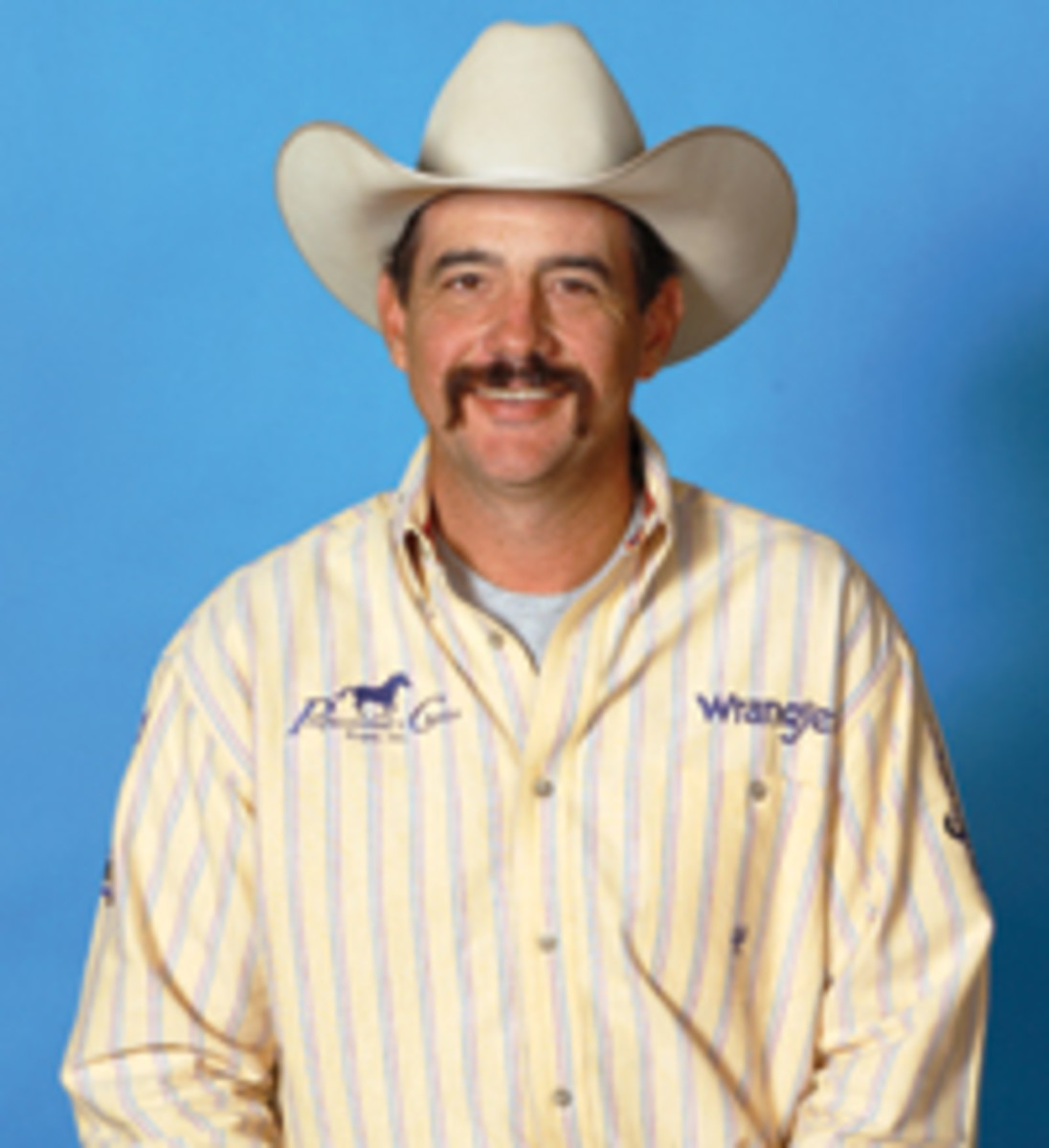
Good handles are an important component in any team’s success, because the handle can make the difference between winning and losing. It’s that important-if you give your heeler a bad handle you’re in the ditch.There are a few fundamentals of good handles that stay consistent regardless of whether you’re trying to make a rodeo or jackpot run. Remember, it’s not keep-away. It’s a team effort. Your handle starts with your positioning after you rope a steer. You want to stay to the left, get ahold of the steer and soften the corner to give your partner his best shot.
When the head rope goes on it has to be tight from around the horns to the saddle horn to have control of the steer. From there, you can either slow down or speed up, depending on the situation.
You need to be consistent in your handles, so your heeler knows exactly what to expect. If the steer’s running he needs to know you’re going to slow him down. If the steer’s slow you need to speed him up to where his feet come together.
If you need to make a rodeo or go-round type run, you’re roping the steer as you’re coming to him. Things are moving a little faster, but you don’t want things to get out of control. It’s the same move, it’s just one step faster.
There basically isn’t much difference between rodeo and jackpot handles, except that you’re speeding things up and taking it up a notch when you get to the rodeo. The
corner’s going to come quicker, but the move’s the same and the position’s the same, except the header’s position is usually a little further back because he doesn’t have time to take a swing over the steer’s back.
You don’t pull the steer faster, and you want to stay as smooth as possible-being as fast as possible while still being smooth and in control.
At jackpots, the header’s position is usually closer, then you do it all basically the same except for slowing things down instead of speeding things up. The header rides up there and takes a high-percentage shot, then slows things down to give the heeler his best shot.My basic handle is to get ahold of the steer, pick his head up and roll him around there, with his back feet together, so he’s hopping straight across the arena.
Some of the handling mistakes I see start with how people get their slack. They don’t get all the slack out of the loop, which lets the steer take another stride down the arena. Then their horses drop, and it creates a whip.The solution to that is get all your slack out of that loop, get everything tight, then push your horse forward. That creates that little roll, and will put an end to that big whip.
Another common mistake is headers roping and going by the steer a little and down the arena. That usually happens when the head horse doesn’t rate off, or the header gets to looking back, moves his hand and goes down town.
You can prevent that by slowing down and going straight across the arena. And you can get your horse to slowing down a little bit by doing some steer stopping at home.
The main thing when it comes to handles is to try to do the same thing over and over, so your partner knows what you’re going to do in certain situations. It’s a team event, so you need to know each other’s moves. You get that figured out in the practice pen. After that, the key is consistency.










